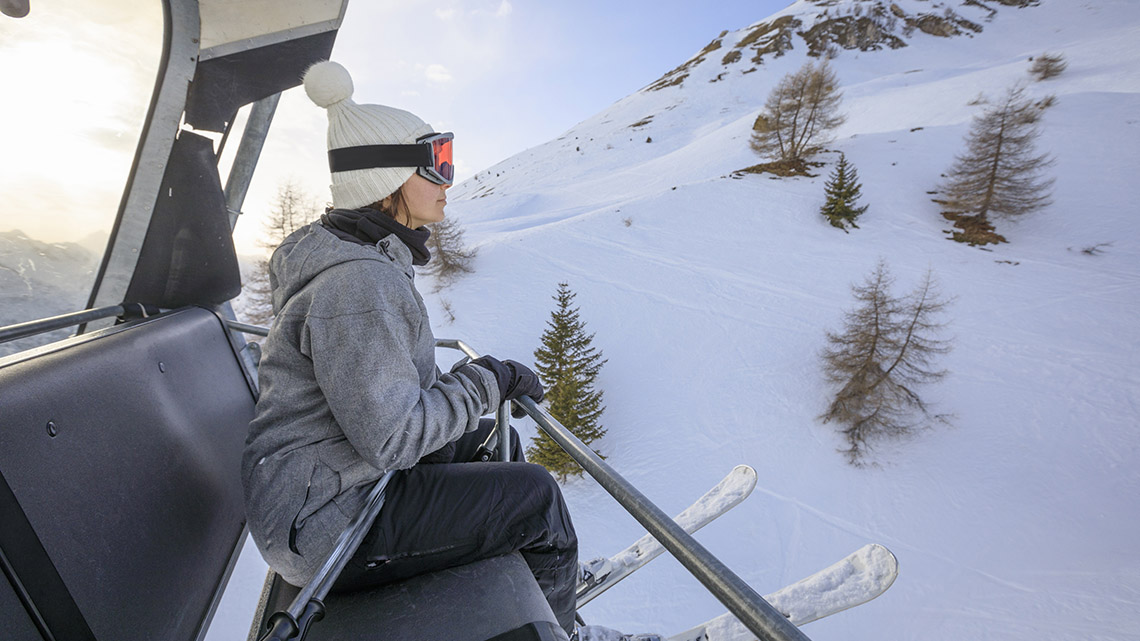Minds On
Describing patterns
Describe the following patterns. What are the next three terms for each pattern? Record your thinking digitally, orally, or in print.
Pattern 1: term 1 has 1 cube, term 2 has 4 cubes, term 3 has 7 cubes, term 4 has 10 cubes.
 Description
Description
A pattern with 4 terms. The first term is 1 cube. The second term is 1 cube centred on top of a row of 3 cubes. The third term is 1 cube centred on top of 2 rows of 3 cubes. The fourth term is 1 cube centred on top of 3 rows of 3 cubes.
Pattern 2: triangle, rhombus, triangle, rhombus, triangle, rhombus…

Pattern 3: small triangle, big triangle, big triangle, small triangle, big triangle…

Pattern 4: a graph (1, 2), (2, 4), (3, 6), linear increase…

Pattern 5: 8, 13, 18, 23, 28, 33, 38…
Pattern 6: 100, 90, 80, 70, 60, 50, 40…
Action
Climbing a mountain

Part A
A hiker hikes up a mountain. In the first hour they are at a 200 m altitude, after two hours they are at a 400 m altitude and after three hours 600 m altitude. If the hiker continues to climb at the same speed, at what altitude will the hiker be at in the next three hours?
Describe the hiker’s pattern. Write, type, use speech-to-text, or record an audio clip.
How long will it take the hiker to get to the top of the mountain if the mountain is 1,000 m high?
Record the hours and heights in a t-table or graph or as a detailed description describing the relationship between hours and height, digitally, orally or in print.
Here is a t-table with X and Y (Hours and Altitude).
Press the ‘Activity’ button to access T-Table.
Here is an x- and y- axis with grids and numbers. The x-axis is labelled 1 to 10 and the y-axis is labelled 0 – 1,000.
Complete Line Graph in your notebook or using the following printable document.
Press the ‘Activity’ button to access Line Graph.
Part B
The hiker returns down the mountain at the end of the day. Going down the mountain is easier than climbing. Starting at the 900 m altitude, it takes the hiker 3 hours to get to the bottom. They descend the same distance every hour.
How many metres does the hiker descend every hour?
Describe the pattern.
Display the time and altitude in a print or digital t-table or graph or create a descriptive written or audio recording.
Press the ‘Activity’ button to access T-Table.
Here is an x- and y- axis with grids and numbers. The x-axis is labelled 1 to 10 and the y-axis is labelled 0 – 1,000.
Complete Line Graph in your notebook or using the following printable document.
Compare Part A and Part B
Compare the information you collected in PART B with PART A.
Was the ascent (going up) or the descent (coming down) quicker?
What do you notice about the graphs?
How do the graphs help you to better understand the data?
Press ‘Answers’ to reveal the answers.
PART A
A hiker hikes up the mountain 200 m per hour. If the hiker continues to climb at the same speed, in the next three hours the hiker would be at 1,200 m.
Pattern is 200, 400, 600, 800, 1,000, 1,200. It starts at 0 and goes up by 200.
The top of the mountain is 1,400 m so it will take him 7 hours to get to the top.
PART B
When the hiker goes down the mountain, he descends 900 m in 3 hours.
This means the hiker descends 300 m every hour.
The pattern is 900, 600, 300, 0 meters. The pattern starts at 900 and is decreased by 300.
When comparing the information from both parts:
The graph in Part A should be inclined in the positive direction, showing an increasing pattern. The graph in Part B will decline showing a decreasing pattern.
I think the descent was quicker because the line in the graph is steeper than the line for the ascent.
I notice that both graphs are straight lines which means the data is going up/down by a steady increment, or the same value. The graphs help us understand the rate at which the hiker was climbing/descending the mountain.
Consolidation
Skiing on the mountain

A skier is on the same mountain as the hiker. The skier is skiing so they go up the mountain with the lift and then ski back down. The ski lift moves at a constant speed of 250 meters up the mountain each minute.
How high up the mountain is the skier each minute?
How long will it take the skier to get to the top?
Describe the pattern, use a table of values or graph it, or discuss your thinking in an audio recording.
The skier skis downhill and their altitude decreases 250 m every 30 seconds. What is the pattern of descent? How long will it take to ski to the bottom of the hill if the skier begins skiing at 1,250 m?
Using a digital or printed graph, plot the hiker’s and skier’s descent on the same graph, or compare their table of values, or discuss what you notice by creating an audio recording.
Compare them.
Why are the inclines different?
Reflection
As you read the following descriptions, select the one that best describes your current understanding of the learning in this activity. Press the corresponding button once you have made your choice.
I feel…
Now, expand on your ideas by recording your thoughts using a voice recorder, speech-to-text, or writing tool.
When you review your notes on this learning activity later, reflect on whether you would select a different description based on your further review of the material in this learning activity.